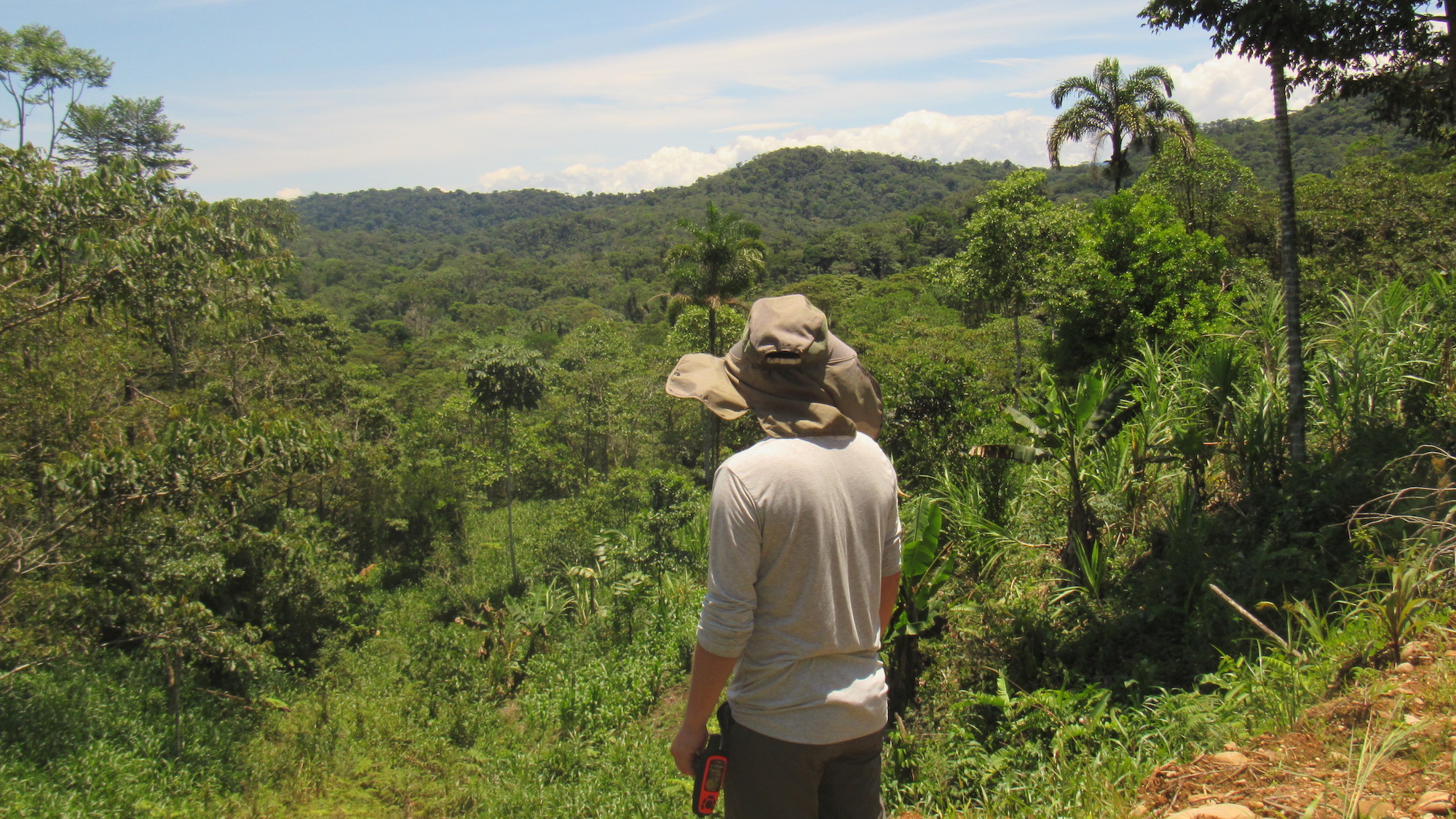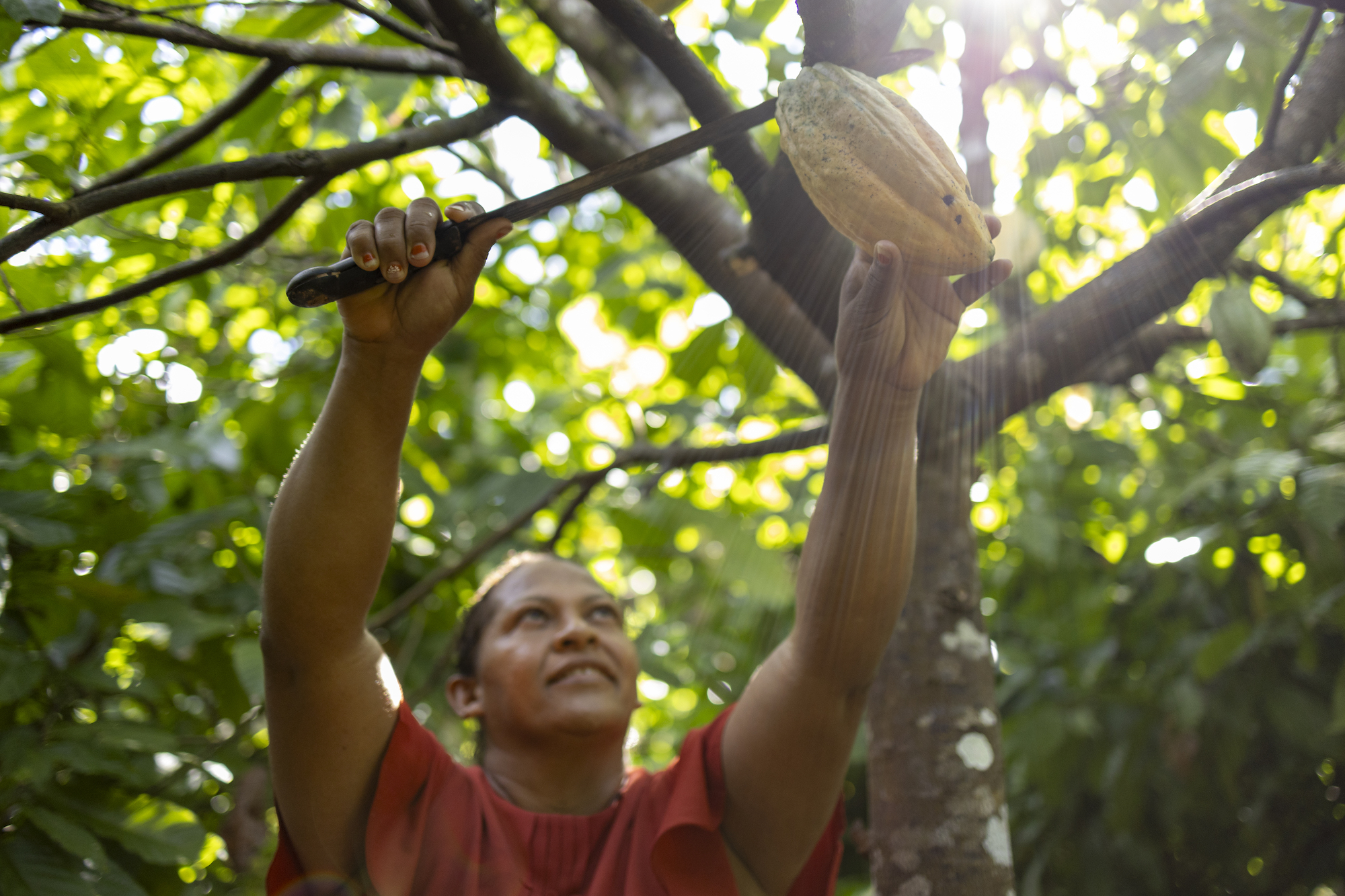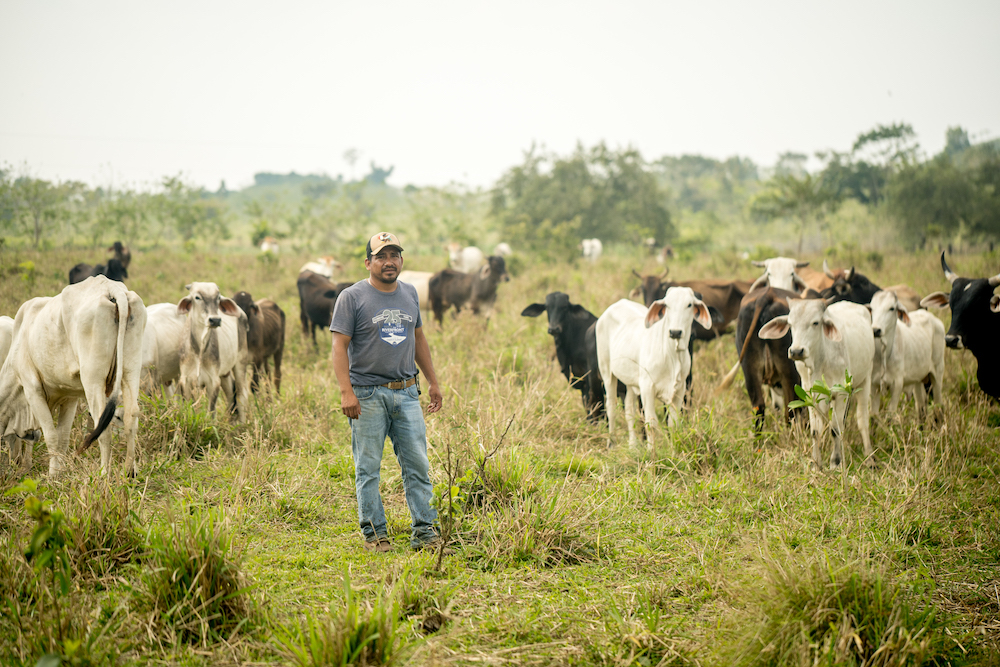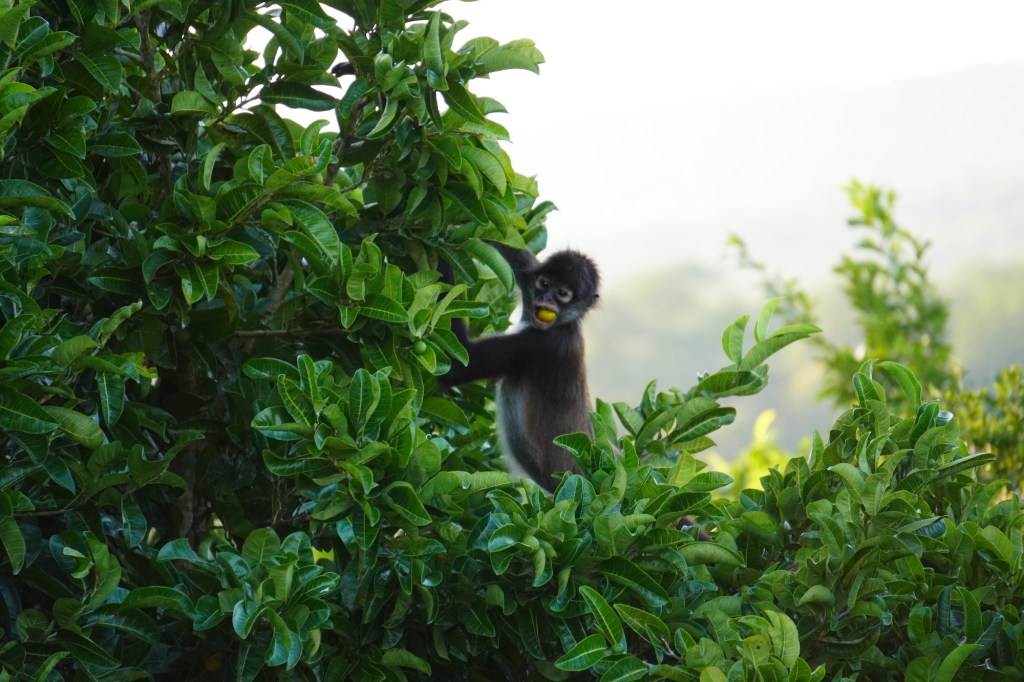A spider monkey swings between leafy branches with a mouthful of ripe fruit. Nearby, cows graze in a pasture shaded by caimito de montaña (Chrysophyllum sp) and other broadleaf trees and separated from food crops by a living green fence of mainly madrecacao (Gliricidia sepium (Jacq.) Kunth) and piñon (Jatropha curcas L.) trees. Somewhere in the distance, a jaguar sleeps in the forest. We are in an agroforestry system in the Maya Biosphere Reserve (MBR), a 2.5-million-hectare expanse of iconic national parks and community-managed forest concessions that simultaneously protect some of Guatemala’s most iconic wildlife and support the livelihoods of more than 200,000 people.
This is one example of how the integration of trees into agricultural lands – the practice known as agroforestry – can support biodiversity and local livelihoods and provide critical ecosystem services. As with any tree cover restoration, planting the right trees in the right places can improve water regulation and soil health, decrease erosion, and improve air quality. Trees provide shade for farmworkers and livestock – in Colombia, for example, farmers can see immediate increases in milk production after planting trees in pasture areas because their cows aren’t as stressed by the heat. Integrating trees into crop areas also improves habitat connectivity so that wildlife can move more easily across landscapes that would otherwise be inaccessible. Agroforestry helps farmers diversify their incomes. The list of benefits goes on.
Beyond these local benefits are some exciting global benefits, too. More trees in the ground means more carbon storage in the soil and trees’ biomass, which means agroforestry systems could prove a valuable ally in tackling climate change, offering up to 310 million metric tons of carbon removal per year. That’s about the same as climate benefit as running 82 thousand wind turbines.
Agroforestry comes in different forms: integrating trees into grazing lands (silvopasture), planting trees between rows of crops (intercropping), or thriving mixed-species systems that pair fast-growing trees destined for harvest with shade-loving species like cacao underneath.
While agroforestry can be adapted for large-scale commercial agriculture, many of these systems reflect the traditional farming practices of Indigenous peoples and local communities.
Since agroforestry has been recognized as a promising natural climate solution, a network of scientists at TNC has been working with local communities to better understand the potential of these practices, and to support their integration into national climate targets. Read on to learn about four places where this is underway.
Top 10 List
-
Ancestral Agroforestry Systems Chakra/Aja in the Ecuadorian Amazon
Ecuadorian Amazon

A mixed species agroforestry plantation in the Ecuadorian Amazon © Paulina Álava Núñez The traditional knowledge of Indigenous people in the Ecuadorian Amazon merges agriculture and forestry production practices (known locally as chakras and ajas, for Kichwas and Shuar people respectively) for subsistence, and more recently for commercialized products. These ancestral agroforestry systems support high levels of biodiversity, provide food and medicine to communities, and are important for maintaining cultural customs. However, threats such as climate change and deforestation for monocultures in the region make it necessary to take urgent measures to preserve these traditional systems.
TNC Ecuador is supporting a project that encompasses 117,000 hectares of managed lands belonging to the Kichwa and Shuar Indigenous nationalities in the Napo and Pastaza provinces of the Ecuadorian Amazon. Given there is little information available on the climate benefits of these systems, the carbon storage capacity and the factors that lead communities to convert away from traditional land management practices, the project teams are measuring the climate mitigation potential of different types of agroforestry systems. The results produced by this work are expected to inform how chakra/aja management practices can improve carbon sequestration and thus economic livelihoods for Indigenous communities, and can also guide the design and implementation of equitable agroforestry climate projects in the Amazon.
-
Agroforestry & Forest Restoration in Brasil’s Amazon Basin
Brasil

Rosely Dias, a rural producer from Pará state in the Brazilian Amazon, transformed her unproductive farmland into a thriving agroforest. © Maíra ErlichPhoto: Maíra Erlich Over the past two decades, the state of Pará has contributed some of the highest quantities of greenhouse gas emissions in Brasil, caused primarily by forest conversion for cattle ranching, much of which occurs on small, private farms. Since tropical forest soils tend to be nutrient-poor, pasture management in previously forested areas in Pará is costly, requiring resource-intensive soil management to maintain its productivity.
As productivity diminishes over time, farmer income declines, and these sites may be abandoned, leading to further forest conversion. However, promoting cocoa agroforestry and forest restoration on degraded pasturelands promises to deliver climate, biodiversity, and diversified livelihood benefits for this region of the Amazon.
-
Cocoa and Coffee Agroforestry in Dominican Republic Water Fund Sites
Dominican Republic

A scientist measures a cacao tree in an agroforestry system in the Dominican Republic © Leila Cudemus The Dominican Republic has a national system of protected areas that incorporates essential aquatic ecosystems. However, existing farming and ranching practices compounded by low management capacity in protected areas have reduced the health of these ecosystems, and the ecosystem services they provide, including the regulation of clean water.
To address this challenge, TNC in the Dominican Republic has implemented a Water Funds strategy for the ecosystems that provide the cities of Santiago and Santo Domingo with fresh water. Water funds support conservation activities that contribute to water security in the region and offer coffee and cacao plants, shade trees, and technical assistance to farmers who incorporate trees into their coffee and cacao farms. These trees help reduce runoff from nearby farms, increasing the water quality for both local communities and people in larger cities downstream. The trees also provide shade to cattle.
Now, the project team is working to assess the climate mitigation outcomes of these activities, particularly focusing on agroforestry. This will help contribute to our understanding of whether activities supported by water funds can demonstrate that sustainable land management for water quality and community benefits can also yield measurable climate benefits.
-
Forest Conservation and Regenerative Ranching in Guatemala
Guatemala

Sustainable ranching in the Maya Biosphere Reserve, Guatemala © TNC Despite its importance, Guatemala’s Maya Biosphere Reserve (MBR) is threatened by the expansion of agriculture, especially cattle ranching. High rates of deforestation, mainly through forest fires, also cause significant annual forest losses and greenhouse gas emissions.
However, an increasing number of local ranchers are playing a key role in the conservation and restoration of the MBR buffer zone, a band of land along the southern MBR where land management activities such as agriculture are allowed. This area has considerable potential for the adoption of natural climate solutions, and the experience and knowledge of some ranchers and local communities around improved practices, paired with research from scientists at TNC Guatemala and partner institutions, are already helping to activate this potential.
Efforts in regenerative and sustainable livestock practices in the MBR include silvopasture (integration of trees into grassy pastures) and forage banks (areas of pasture reserved for grazing during the dry season), among other grazing optimization techniques. Electric fences have also been shown to help reduce wildlife-cattle conflict and thus prevent the wildlife from being hunted by ranchers.
Aside from their benefits to biodiversity, local livelihoods, and ecosystem services, many of these practices are expected to increase carbon stocks and sequestration across the MBR. This means they have implications for forest recovery, helping the country meet its climate targets, and the possibility of local communities to participate in carbon markets, which would help to diversify their incomes.
If you’re interested the work that blue carbon project teams involved in TNC’s Natural Climate Solutions Prototyping Network are doing around the world, you can learn more here.




Join the Discussion